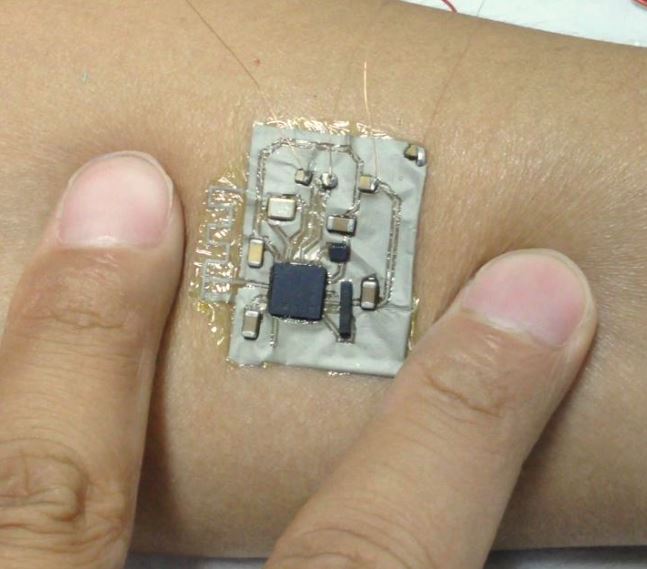
The debut of AppleWatch early this year has stimulated a new wave of interests in wearable electronics worldwide. Wearable devices include electronics on cloth, in wrist watch and ultimately on human body. Flexibility, stretchability and conformability are the basic requirements if an electronic device sticks to human body.
There have been different approaches developed to meet the above requirements. For example, Professor BAO Zhenan of Stanford University developed “electronic skin” based organic and carbon nanotube thin-film transistors; Professor John A. Rogers of University of Illinois at Urbana-Champaign developed “electronic tattoo” based on thin silicon chips interconnected with meandering metal wires.
Last month, researchers at the Printable Electronics Research Center (PERC), Suzhou Institute of Nano-tech and Nano-bionics, Chinese Academy of Sciences (SINANO), have integrated Bluetooth chip and signal amplification circuit onto skin-like flexible substrate using printed nanosilver ink as interconnects. The fully functional Bluetooth circuit can intimately stick to human skin (Figure 1). By further integrating a paper battery and a microsensor with the circuit, a skin patch sensor system has been built, which can stick to human body and send out sensor signal such as body temperature wirelessly to a smart phone (Figure 2).
“By combining the COTS (commercial off-the-shelf) components and printed electronic technique, researchers utilized the best of both world and solved the key issue how to get the sensing signal out wirelessly for a skin patch sensor and the system is much easier to implement and more powerful in functionality than previous approaches. The Bluetooth circuit on a skin patch serves as a platform and different type of sensors can be integrated with the platform for detecting or monitoring physiological parameters of human body and connected wirelessly with a smart device or internet”, said Professor CUI Zheng, director of PERC at the Suzhou Institute of Nano-tech and Nano-bionics, Chinese Academy of Sciences.

Figure 1 Bluetooth circuit on a skin-like flexible substrate. (Image by SINANO)

Figure 2 A skin patch containing sensor, battery and Bluetooth circuit to send out sensing signal wirelessly to a smart phone. (Image by SINANO)

86-10-68597521 (day)
86-10-68597289 (night)

52 Sanlihe Rd., Xicheng District,
Beijing, China (100864)

